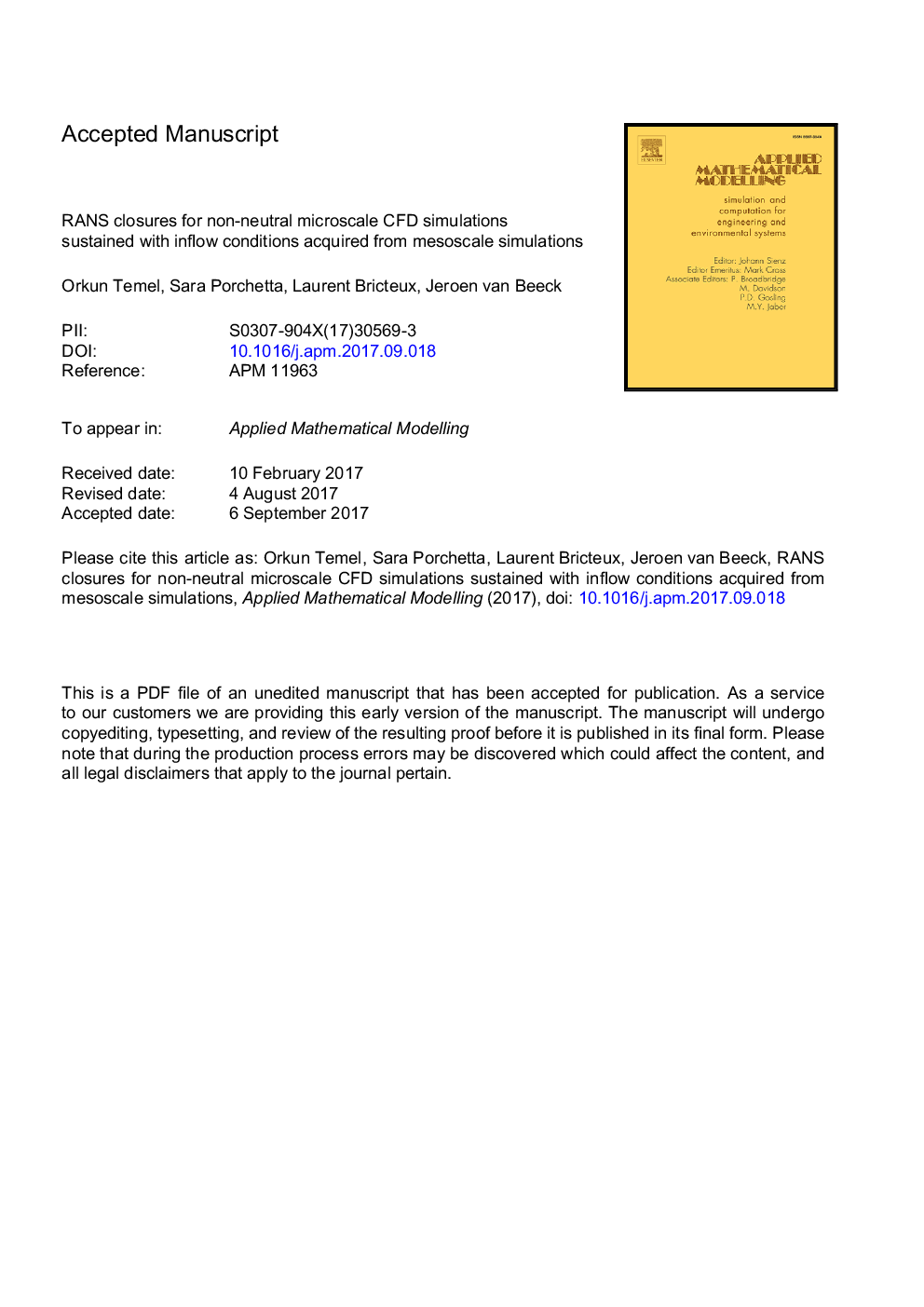| Article ID | Journal | Published Year | Pages | File Type |
|---|---|---|---|---|
| 5470856 | Applied Mathematical Modelling | 2018 | 45 Pages |
Abstract
This study focuses on bridging the gap between the turbulence modelling methodologies of meterological and engineering codes by proposing a novel methodology to define the closure coefficients of Reynolds-Averaged Navier-Stokes turbulence models consistently with the physics of the atmospheric boundary layer. In this framework, different turbulence closures have been developed and tested on different full-scale test cases corresponding to different atmospheric stability conditions by performing microscale simulations with the inflow conditions provided by a numerical weather prediction (NWP) code. Developed turbulence models have been implemented into the open source computational fluid dynamics (CFD) toolbox, OpenFOAM and the inflow conditions have been acquired with another open source code, the Weather Research and Forecasting (WRF) model.
Keywords
Related Topics
Physical Sciences and Engineering
Engineering
Computational Mechanics
Authors
Orkun Temel, Sara Porchetta, Laurent Bricteux, Jeroen van Beeck,
